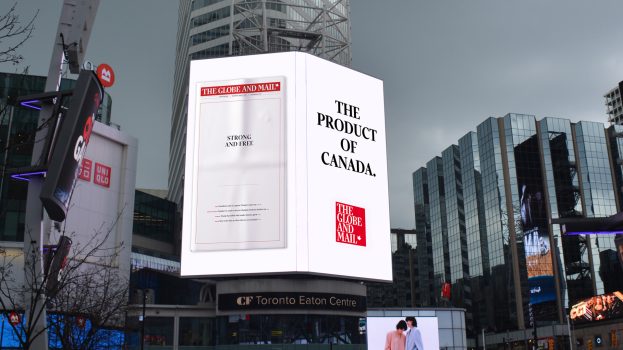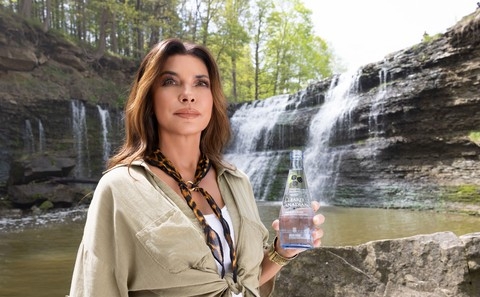Radio in Canada is about to make waves unlike any we have heard before. In fact we could soon be facing tidal waves of change.
The CRTC is undertaking its overall review of radio in an attempt to map out the road ahead and digital radio, in various incarnations, is one of the central topics. New applications (pun intended) for the medium are being explored, Digital Audio Broadcasting (DAB) has been added to the mix, and the concept of subscription radio is being considered. With BBM re-examining the way radio tuning will be surveyed in the future, it’s a sonic feast for radio fans.
While DAB (digital radio offering CD-quality sound plus a display for song credits, weather, traffic, etc.), was initially thought to be a replacement technology for AM/FM, now its future is suggestive of more – providing the CRTC revises regulations to allow for the introduction of DAB-exclusive stations. Experience has taught us that being a high-tech replacement technology is good, but not enough.
Already, over 60 DAB versions of AM/FM stations are currently on air in Vancouver, Toronto, Windsor, Ont., Montreal, and Ottawa. In Halifax, seven DAB signals are also currently being field-tested. Applications for Victoria have just been approved by the CRTC.
But soaring DAB receiver sales in the U.K. (over 500,000 since June of last year) demonstrate the importance of DAB-exclusive stations. The first multilingual DAB-only licence has been granted to Sur Sagar and a number of other applications are pending.
Meanwhile, Radio Canada/ CBC has introduced its first experimental DAB station with a news/weather/traffic offering in Montreal. Look for some very progressive thinking and a number of exciting announcements from them in the near future.
And speaking of the future: If the CRTC buys into the concept of subscription radio, some very interesting alternatives for digital radio may be in store. The CRTC hearing on subscription radio is expected to be held by September, and three recent applications are already turning heads.
These include the XM/Canadian Satellite Radio proposal, the Sirius/CBC/Standard satellite proposal and the CHUM terrestrial/DAB solution. (The hearing was widely expected to be a two-way race focusing on the discussion of satellite, but CHUM took the opportunity to look at an alternative approach using the terrestrial DAB infrastructure, some of which is already in place.)
The initial consideration of subscription radio was triggered by an application made by Canadian Satellite Radio (CSR), a partnership between John Bitove Jr. and Washington D.C.’s XM Satellite Radio, which promises 100 channels of music and information to serve both urban and rural areas nation-wide. The satellite XM service in the U.S. currently boasts 1.5 million-plus subscribers, and an agreement to include XM receivers in General Motors vehicles has been a very positive force – one that is expected to be repeated in Canada.
For its part, CSR doesn’t see itself as being in competition with conventional radio, but rather as a complement to it – one that offers cutting-edge niche programming that mass appeal stations can’t afford to deliver.
The CHUM application, meanwhile, involves a progressive rollout in urban centres that, by the end of the first term of licence, will deliver 100-plus commercial-free DAB stations in a variety of formats. Most importantly, the CHUM application stresses it will fulfil or exceed the 35% Cancon requirements normally demanded by the CRTC. It is presumed the CHUM initiative will feature subsidized digital receivers that offer both traditional free access for conventional DAB stations as well as their slate of conditional access stations for a $10 monthly subscription fee.
While we don’t yet have all of the details on the Sirius/CBC/Standard application, expect a formidable presentation. The CBC partnered with Sirius, in part, because it preferred Sirius’s satellite configuration from a technical perspective. It is also worth noting that the Sirius application makes mention of seeking the development of combined satellite/DAB receivers. If this becomes technically possible, it would provide an ideal solution for the CBC, which is heavily committed to DAB in urban areas, as the satellite transmission would allow them to also adequately cover all outlying areas.
Listeners have been demanding change and they are about to get it. More varied programming options, improved fidelity, display features, and interactivity are just some the features in store. Consider a receiver with a new pause and rewind feature (with a 10-minute buffer) that allows you to scroll back and hear the traffic report you missed or listen to that last song over again. Things just keep getting better.
Lastly, a BBM committee (of which I am chair) has been convened to review survey timing and methodology in Canada. The implications of changes in this area are quite far-reaching for advertisers and the industry in general. I hope to report on some exciting developments in the near future.
In the past year, the collective response to a number of occurrences has underlined the power of radio. The Halifax hurricane, the Ontario blackout and the B.C. forest fires all offered up demonstrations of how important radio can be to a community.
Standing still is simply not an option for a medium that prides itself as being the best option for those on the move. Addressing the audience’s day-to-day needs in an ever-changing world will make the ultimate difference. And radio must deliver if it is to remain relevant in an increasingly complex world.
It would appear that a combination of DAB-exclusive stations and subscription radio will offer valuable niche programming options without diminishing the vital day-to-day contribution of local broadcasters. Add to that, exciting new digital receivers and a wealth of listener survey data.
I think I hear the future…stay tuned.
David Bray is SVP of Toronto’s Hennessy & Bray Communications. He can be reached at: davidbray@sympatico.ca.























